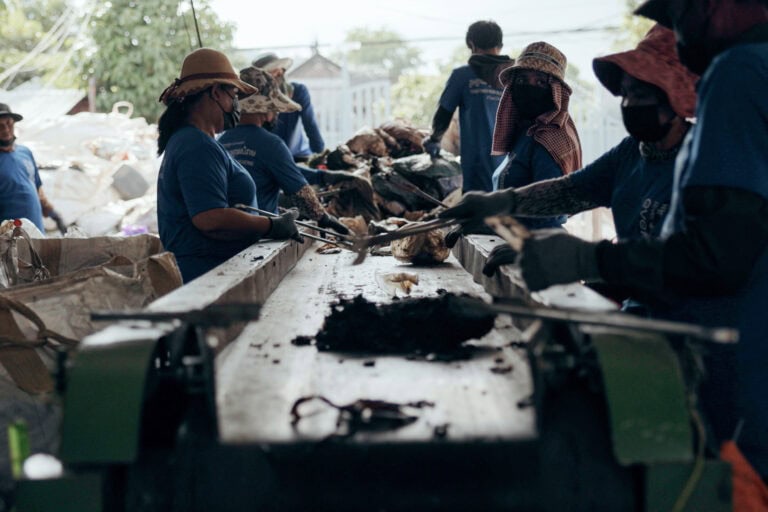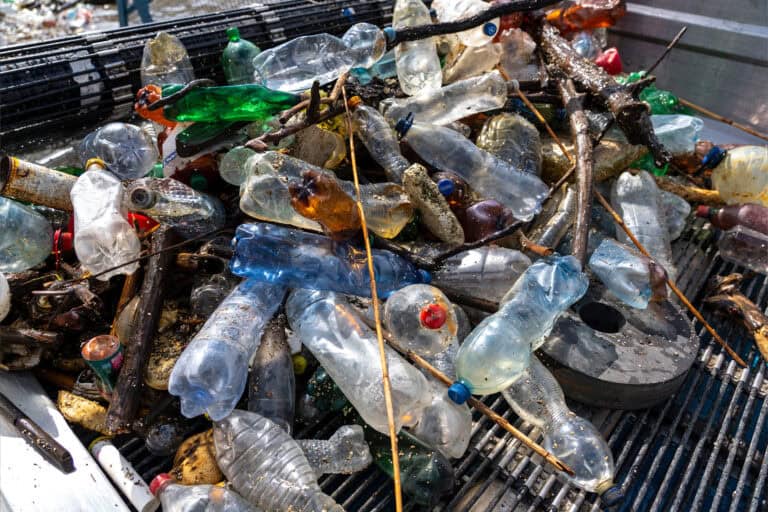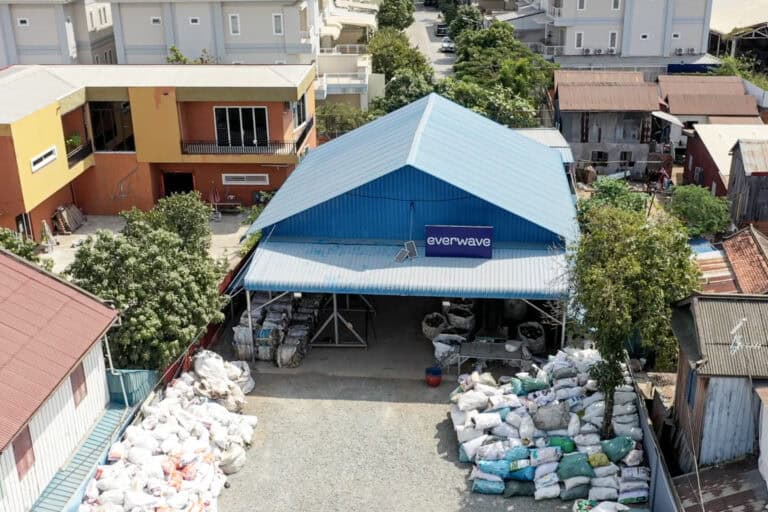Co-Processing: Making Further Use of Waste
In co-processing, non-recyclable plastic is reused as a raw material.
Utilize non-recyclable plastic
A look at Southeast Asia reveals the following picture: recyclable waste is often collected by local actors and sold on to recycling companies. However, non-recyclable plastic waste has no direct value and therefore frequently ends up in rivers, waterways, illegal dumpsites, or is burned at low temperatures, releasing chemicals and toxins.
This also means that our waste collection boat in the Southeast Asian projects mainly collects non-recyclable plastic waste, which is difficult to process further. Of course, our top priority is to ensure that the collected waste does not return to the environment – which is why we have opted for what is known as co-processing.
Co-processing: the basic idea
Not every type of waste is suitable for co-processing. That’s why the collected waste is first sorted and prepared for further processing at our Zero-Waste Center. After sorting, it is mainly non-recyclable plastic waste that is used for co-processing.
Within this process, plastic serves as a base material and is used for energy generation in cement production. Cement manufacturing requires extremely high temperatures and therefore a significant amount of material input. Fossil resources such as natural gas are often used for this purpose. And this is where plastic waste comes in – instead of fossil raw materials, the waste serves as a base material for energy generation.

Cement production: the process
Due to the extremely high temperatures in the kiln, no conventional ash is produced, unlike in standard waste incineration plants where ash must be disposed of afterwards. Fly ash and other residues, which would normally have to be treated as hazardous waste, do not appear separately. The waste is completely utilized both thermally and chemically in the process.
The reason for this complete utilization lies in the chemical composition of plastic: it mainly consists of carbon (C) and hydrogen (H). At the very high temperatures in the rotary kiln (up to 1,450 °C), the long polymer chains are fully broken down and react with oxygen. This produces almost exclusively CO₂ and H₂O (water vapor), leaving no unburned residue.
If the plastic contains additives such as fillers, pigments, or metals, these are incorporated into the cement clinker during the process and become a permanent part of the cement. Even heavy metals (e.g., from colored plastics) are chemically bound and do not escape as ash or dust.
Advantages of co-processing
Due to the extremely high temperatures that prevail in the furnace, no classic ash is produced, such as in conventional waste incineration plants, which has to be disposed of afterwards. Fly ash and other residues, which would have to be disposed of as hazardous waste in conventional incineration, are also not produced in separate form. The waste is completely thermally and chemically recycled in the process.
The reason for complete recycling lies in the chemical composition of plastic: plastic consists mainly of carbon (C) and hydrogen (H). At the very high temperatures in the rotary kiln (up to 1,450 °C), the long polymer chains are completely decomposed and react with oxygen. This produces almost exclusively CO₂ and H₂O (water vapor) and no unburned residue.
If the plastic contains additives, such as fillers, pigments or metals, these are incorporated into the cement clinker during the process and later become an integral part of the cement. Heavy metals (e.g. from colored plastics) are also chemically bound and do not escape as ash or dust.

The local partner: Chip Mong Ecocycle
At our cleanup site in Cambodia, we work with Chip Mong Ecocycle. Chip Mong is the first provider in Cambodia to implement a sustainable industrial waste management solution and introduced the co-processing method in Cambodia for the first time in 2019.
In their cement plant, Chip Mong uses non-recyclable plastic waste as a substitute fuel for coal in cement production, utilizing state-of-the-art equipment. The high temperatures in the cement kilns, combined with long retention times, ensure thorough destruction of the waste.
Co-processing in the everwave projects
At everwave, we do not see co-processing as the sole solution to tackling the waste problem. However, it is currently the best way to manage non-recyclable waste in Cambodia and prevent it from ending up in the environment.
Co-processing can only be considered a complement to local recycling processes and contributes to solving the waste problem only when there is a functioning recycling infrastructure in place. Naturally, the primary focus must always be on reducing plastic usage and increasing recycling rates.



